The 18 years I spent in east Dallas, 12 of which were as a student at Kiest, Hexter, Hill and Bryan Adams, have been fairly well covered. Ah, but downtown, Fair Park, Oak Cliff and other parts of the city deserve to be addressed. Here are some memories, in neither chronological nor geographical order. I’m scattershooting, as Blackie Sherrod used to say in his Dallas Times Herald columns.
● On the way to Oak Cliff—in days prior to November 22, 1963—my family often drove through Dealey 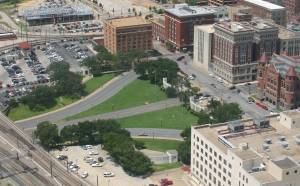 Plaza. I thought it was a splendid setting, beautifully laid out. I do not, however, suggest that this constitutes any kind of premonition that a dramatic event would happen there someday.
Plaza. I thought it was a splendid setting, beautifully laid out. I do not, however, suggest that this constitutes any kind of premonition that a dramatic event would happen there someday.
● I went to NorthPark mall and, along with many others, watched through the glass as Sump’n Else was filmed. This show, a local version of American Bandstand, was hosted by Ron Chapman. Here we are 50 years later and I can still recite the names of the female go-go dancers: Colleen Anderegg, Joanie Prather, Kathy Forney and Delpha Teague. Sump’n Else aired on Channel 8 from 1965 to 1968.
● Stone Place Mall was a tiny downtown park established in 1905. I once paid a visit because I heard that hippies smoked pot there and political protests took place.
● I attended a few baseball games at Burnett Field (1924−1964), home of the Dallas / Fort Worth Rangers. It was on the south bank of the Trinity River, offering a fine view of downtown. Burnett Field had a seating capacity of 10,500. The only players I remember are third baseman Ray Jablonski (kicking around in the minors after eight seasons with the St. Louis Cardinals, Cincinnati Reds, New York / San Francisco Giants and Kansas City A’s), infielder Dick Tracewski (eight years with the Los Angeles Dodgers and Detroit Tigers, and another 24 as a coach in Detroit) and outfielder Tony Oliva (destined for 15 solid seasons with the Minnesota Twins). A tenant during the Jim Crow era had been the Dallas Black Giants, and one of their players was shortstop Ernie Banks—a Dallas native soon to commence a Hall of Fame career with the Chicago Cubs.
● Many times I was at the Farmers Market at the intersection of Pearl and Cadiz streets. Beginning in the late 19th century, farmers within a 150-mile radius of Dallas would bring their produce in and put it up for sale. Forgive me for waxing sentimental, but I just loved going to this place. Never since have fruits and vegetables been so appealing. At the Farmers Market, all the senses—sight, sound, smell, taste and touch—were fully engaged.
● On a blisteringly hot summer day about 30 years ago, I was driving north on the frontage road of Central Expressway. A well-dressed black lady was outside of her car, and she had a flat tire. She clearly did not want to get her hands dirty. I stopped, I helped her, she was grateful, end of story.
● My freshman year at UT, I was back in Dallas for the big game—by which I mean the Longhorns and Sooners. I went downtown the night before and observed the massive crowds around the Adolphus and Baker hotels on Commerce Street. I was aghast at the juvenile behavior. Hundreds of knuckleheads were drunk, taunting each other, chanting and behaving in ways their mothers would not have approved of. I stayed no more than 30 minutes and said, “Forget this.”
● At the Farmers’ Branch YMCA, I coached a fifth-grade boys basketball team called the Green Hornets. This was in 1978. We made it to the championship game and then got trounced.
● Ownby Stadium opened in 1926 and lasted until 1998. I believe I was there four times: (1) To see an SMU track meet, (2) to see the Ponies’ red-and-blue game one spring (maybe 1968?), (3) to watch the 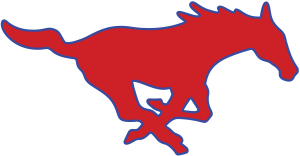 Dallas Tornado play soccer and (4) to see the SMU-Rice football game on September 2, 1989. This, as you may recall, was SMU’s first season after getting the “death penalty.” The Owls won, 35-6.
Dallas Tornado play soccer and (4) to see the SMU-Rice football game on September 2, 1989. This, as you may recall, was SMU’s first season after getting the “death penalty.” The Owls won, 35-6.
● Why I never went to see dirt-track auto racing at the Devil’s Bowl in Mesquite, I do not know. But there was another such place in suburban Dallas, and I mean Green Valley Raceway. Two friends from Hexter, Steve Riewe and Bo Byrd, were always talking about it. Green Valley consisted of a 1.6-mile asphalt track with assorted twists, turns and doglegs. The straightaway was sometimes used for drag racing. I went once, with my cousin Allen Cox in the late 1960s. We saw a sports car race in which Dan Gurney (winner of the 1967 24 Hours of Le Mans) and Parnelli Jones (winner of the 1963 Indy 500) drove souped-up Mustangs. Green Valley has been gone since 1986, but the Devil’s Bowl lives on.
● I watched my brother play baseball at Buckner Orphans Home against the Buckner team. I felt both pity and respect for these guys. With backing from the Baptist General Convention of Texas, the organization was started in 1879 and is still going (annual revenues of $74 million), albeit with a new name—Buckner International.
● OK, this happened outside of the Dallas city limits. I went with Monte DeVinny circa 1968 to see the D/FW Rangers at Turnpike Stadium in Arlington. I was back eight years later to see the Texas Rangers—major league, baby!—host the New York Yankees. Reggie Jackson’s home run came within a foot of my 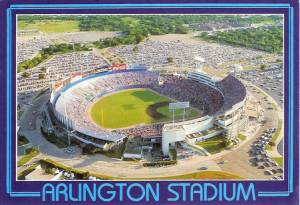 outstretched hands in the right field bleachers. Helped greatly by Arlington tax payers, the franchise got a much more suitable stadium in 1994. I attended a game between the Rangers and Kansas City Royals that first year. Barely two decades later, the owners began clamoring for a new, retractable-roof stadium and were so gifted. Due to open in 2020, it will be smaller and yet have better “revenue streams.” This makes me want to holler.
outstretched hands in the right field bleachers. Helped greatly by Arlington tax payers, the franchise got a much more suitable stadium in 1994. I attended a game between the Rangers and Kansas City Royals that first year. Barely two decades later, the owners began clamoring for a new, retractable-roof stadium and were so gifted. Due to open in 2020, it will be smaller and yet have better “revenue streams.” This makes me want to holler.
● My maternal grandfather, W. Adair Cox, was active in the downtown scene for 40 years. Despite being rather fond of the bottle, he composed a vast number of historical-oriented sketches that appeared in the Times Herald and Morning News. Grandpop was also devoted to the Shriners, the guys who wore red fezzes and did good civic deeds. He took me and my brother to half a dozen Shriner parades near their headquarters on Harwood Street.
● I went with my paternal grandfather—who had no drinking problems I knew of—to a Harley-Davidson dealership in Deep Ellum; this is where Leadbelly and Blind Lemon Jefferson used to play blues. Papaw, a motorcyclist in his younger days, asked the man to take me out for a short spin on a “hog.”
● I remember swimming at Kidd Springs in Oak Cliff.
● When reading the Morning News and Times Herald, I was often puzzled that page after page was given over to society doings. A young woman—let’s call her Cissy Farqhuar—from Hockaday or Ursuline or Highland Park High School was making her society debut; she was a debutante. Our Miss Farqhuar wore a long satin dress, and her hair was made up in ringlets with yellow bows. She was the daughter of Mr. and Mrs. James Farqhuar. The dainty deb was escorted by Stephen “Trey” Smith, son of Mr. and Mrs. Andrew Smith, who wore a powder-blue tux. After the party, they dined on wild Fijian albacore sashimi with pea tendril salad, toasted hazelnuts, garlic chips, scallions and melon cilantro vinaigrette. I can tell you for certain, nobody in my world cared about such things.
● I doubt that Cissy and Trey ever went to the Sportatorium, the unsavory, déclassé white barn-like arena used mainly for pro wrestling. It opened at 1000 South Industrial Boulevard in 1935, burned and was quickly rebuilt in 1953, closed in 1998 and was demolished in 2003. I confess to having watched 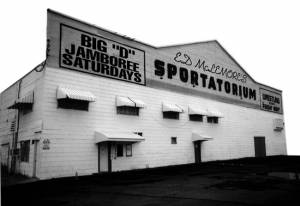 numerous matches on TV—especially those featuring Bull Curry and the clean-cut Kozak brothers, Nick and Jerry. The Sportatorium did have other purposes, though. From 1948 to 1966, it was home to a weekly country music showcase called Big D Jamboree (a poor cousin of the Louisiana Hayride and Grand Ole Opry). I was there just once, to witness a rock & roll show in the mid-1970s.
numerous matches on TV—especially those featuring Bull Curry and the clean-cut Kozak brothers, Nick and Jerry. The Sportatorium did have other purposes, though. From 1948 to 1966, it was home to a weekly country music showcase called Big D Jamboree (a poor cousin of the Louisiana Hayride and Grand Ole Opry). I was there just once, to witness a rock & roll show in the mid-1970s.
● I vowed to stay away from things that happened in our part of Dallas, but this one must be told. During the summer of 1964, I was with my brother Randy and two or three other kids, and we were exploring White Rock Lake. The water was low. In fact, there was NO water on the shore—just mud caking into dried sediment. I walked 15 or 20 yards into this mud and then a little further. My brother and the other guys were laughing until they saw me start to sink! I tried but could not extricate myself. Randy then came trudging toward me. He reached out his hand for mine and pulled me to safety. What if he had not? I might well have submerged into the muck, and what a horrible way to go. It is also possible that solid footing was just another inch or two under my feet, and thus I had no reason to panic. The bottom line is that my brother came out and got me. We must have looked awful when we walked into our home, covered with nasty gray mud.
● During my junior year at BA, I met a girl in study hall who very calmly informed me that she was a lesbian. One time, she and her girlfriend took me to the Lone Star Drive-In (just off R.L. Thornton Freeway), and the three of us watched a heterosexual porn movie. I am not making this up. The Lone Star was in existence from 1951 until 1987.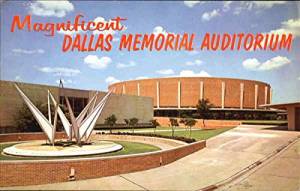
● Along with 1,100 others, I graduated from BA in May 1971 at Memorial Auditorium downtown, where I had seen the Dallas Chaparrals play in their inaugural season of 1967−1968. This place has been vastly redone and now forms part of the Kay Bailey Hutchison Convention Center.
● Back to the JFK assassination. I visited the sixth floor of the Texas School Book Depository before it was turned into a museum. I went downstairs at the police station where Jack Ruby plugged Oswald with a snub-nosed revolver on a gloomy Sunday morning. I went into the Texas Theater (where Oz was apprehended) numerous times. I explored the so-called grassy knoll and the railroad tracks traversing the Triple Overpass. I went to 10th and Patton streets, where he had killed Officer J.D. Tippitt shortly after taking dead aim with his Mannlicher-Carcano at Kennedy and Texas Governor John Connally. I went to his 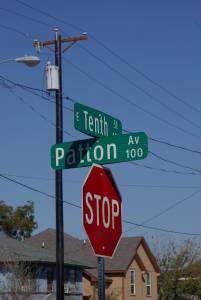 rooming house in Oak Cliff. I tried but failed to find Ruby’s apartment; it was not far away, which some people found suspicious.
rooming house in Oak Cliff. I tried but failed to find Ruby’s apartment; it was not far away, which some people found suspicious.
● How’s this for a cheap date? One night in 1970, I went with a GF to Love Field and watched the planes take off and land. Speaking of Love Field, my paternal grandparents lived in a wood-frame house not far away. Conversations were often interrupted by the roar of jet engines.
● Randy Fisher and I had heard that caddying was a good way to make money, and so we gave it a try one Saturday morning. This was in 1966 or 1967, when we were at Hill. We went to Tenison Park Golf Course and found a couple of men who wanted our services. All 18 holes, we lugged these guys’ bags and listened to their goofy banter. When it was over, Randy and I were exhausted and had barely earned enough to cover our round-trip bus fare. Never again.
● I attended high school (Bryan Adams), college (SMU and UT) and pro (Dallas Cowboys and Dallas Texans) football games at the Cotton Bowl. Perhaps my most vivid memory was sitting in the upper deck and watching the Horns get mauled by Oklahoma in 1972. One question kept rolling around my mind: “Why doesn’t Royal integrate?” In fact, there was a smattering of black Longhorns—Roosevelt Leaks, Howard Shaw, Donald Ealey, Lonnie Bennett and Julius Whittier—then, but the weak-kneed DKR insisted on going slow. In the years since, nobody has written more extensively about this matter than yours truly.
● I was very young, so this may have been in the late 1950s. It was Christmas time and a cold night. Many people were standing outside Oak Cliff Presbyterian Church looking at a manger scene: Joseph, Mary, Jesus and maybe a donkey and a lamb. Confused, I asked myself, “Are these actors or the real thing?”
● My father put in 25 years at the Ford plant on East Grand Avenue, on the assembly line and as an office worker. A decal was placed on the rear window of every car that came out of said factory. It read “Made in Texas by Texans.” Dad was a member of Ford’s fast-pitch softball team, which played many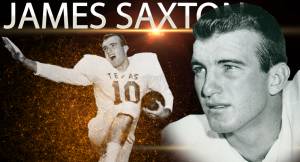 games on the diamonds at nearby Samuell Grand Park. An occasional opponent was First National Bank, and one of the players was Jimmy Saxton, the former UT football star (third in Heisman Trophy voting in 1961).
games on the diamonds at nearby Samuell Grand Park. An occasional opponent was First National Bank, and one of the players was Jimmy Saxton, the former UT football star (third in Heisman Trophy voting in 1961).
● I recall going by the Dallas Public Library on Commerce Street and gazing at the sculpture outside. “Quest for Knowledge” by Marshall Fredericks featured two huge hands on which a boy stood, holding a book and looking skyward. There had been a big brouhaha before the library opened in 1955 because the kid was originally naked; the unveiling was delayed until Fredericks put some pants on him.
● 1988, 1989, 1990, 1992, 1993, 1994, 1995, 1996, 1997, 1998 and 2003—that makes 11 times I ran the White Rock Marathon. My best showing was ’92, when I did a 2:42:51 for 34th place overall. We always finished in front of Dallas City Hall.
● I went to a holy-roller gathering at a tabernacle in west Dallas once. I estimate that 2,000 people were in attendance, and some of the preacher’s instant healings on stage and in the aisles seemed rather dubious.
● Forty-nine years after Baylor Hospital opened on Gaston Avenue, I was born there. It was December 9, 1952, and the little bundle of joy weighed 8 pounds, 11 ounces.
● The course of the White Rock Marathon has changed, but it used to include Turtle Creek, a component of which is Robert E. Lee Park. There you can see Marse Bob on his horse, Traveller. I now read from afar of a dispute between persons of color and persons not of color as to whether the statue should be removed. I am a descendant of soldiers who fought for the Confederacy, and one of my grandmothers belonged to the Daughters of the Confederacy. My dilemma is that I do not know which I abhor most—(1) the CSA’s legacy of racism and slavery or (2) political correctness and erasing selected aspects of history. Who selects?
● Smooching and petting with a girlfriend one night in the Marsalis Zoo parking lot.
● During my youth, the tallest building in Dallas was the Sheraton Life. The tallest prior to that had been the Mercantile National Bank Building and before that the Magnolia Petroleum Building, a 29-story 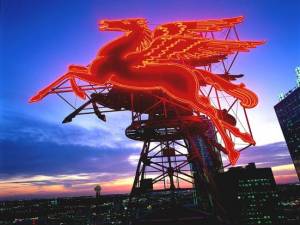 beaux arts−style edifice that went up in 1922. That oil company later installed a neon, winged stallion (“Pegasus”), undoubtedly one of the city’s most famous landmarks. All three of these buildings have long since been obscured by much larger skyscrapers such as Bank of America Plaza, Comerica Bank Tower, Chase Tower and Renaissance Tower.
beaux arts−style edifice that went up in 1922. That oil company later installed a neon, winged stallion (“Pegasus”), undoubtedly one of the city’s most famous landmarks. All three of these buildings have long since been obscured by much larger skyscrapers such as Bank of America Plaza, Comerica Bank Tower, Chase Tower and Renaissance Tower.
● Reunion Arena (home of the Dallas Mavericks of the NBA and Dallas Stars of the NHL) opened in 1980 in the western part of downtown. It was supposed to be an economic engine spurring all kinds of development. Didn’t happen, as is so often the case with the promises of pro sports owners. The facility—apart from the Hyatt Regency Hotel and the distinctive Reunion Tower—was razed in 2009 as both franchises had left eight years earlier for more palatial digs a few miles north. I was in Reunion Arena just once, to witness a hockey game.
● A couple of times during my high school days I went inside Cokesbury Book Store at 1910 Main Street. I was dazzled, and why not? There were five floors of books, covering virtually every subject. Of course, I had no way of knowing then that reading books and writing them would become such a big part of my life. Cokesbury, alas, is no more. Brick-and-mortar book stores, which sell books—you know, the kind you can hold in your hand—are a vanishing breed.
● My father, an alumnus of Woodrow Wilson, took me to a Wildcats football game at P.C. Cobb Stadium in the 1960s. Built by the Works Progress Administration in 1939, it had room for 22,000 fans—huge for a high school stadium at the time. It correlates closely to Houston’s Jeppesen Stadium (another WPA 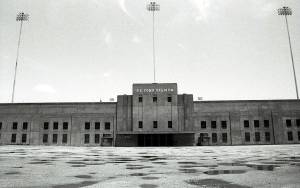 project), which opened in 1942. That one was expanded and remodeled, and served as home field for the Houston Oilers and UH Cougars before being razed in 2012. Cobb had met the wrecking ball nearly 30 years earlier.
project), which opened in 1942. That one was expanded and remodeled, and served as home field for the Houston Oilers and UH Cougars before being razed in 2012. Cobb had met the wrecking ball nearly 30 years earlier.
● As a Cub Scout, I took excursions to the aforementioned Ford plant on East Grand, a bakery, the Dr Pepper bottling plant on Mockingbird Lane, the Dallas Morning News plant and—most improbably—the Dallas County Jail. I look back and shake my head in amazement. Were little kids really allowed in such a place? I vividly remember walking down an aisle with cells on both sides. Grim-eyed men looked at us as we passed by.
● I had a Honda 175-cc motorcycle in 1972 and was riding it around the Trinity River bottoms one day when I met a young black kid. I must have given him a ride, although my memory is not clear on that. However, I vividly recall him inviting me into his family’s house nearby. The level of poverty was stunning.
● Finally, one feature of my grade school years was going to the State Fair of Texas every October. Dallas Independent School District students were given round-trip bus tickets and free admission, which begs the question—how did DISD see fit to do this? There was nothing remotely educational in us riding “Comet,” the rickety wooden roller coaster, eating corny dogs, cotton candy and other forms of “food,” checking out the new-model Chevys, Fords and Chryslers at the Automobile Building, trying our hand at games on the Midway and looking at the freak show. When I stared at the fat lady, I felt ashamed of myself.


4 Comments
What a wonderful trip down Memory Lane!
Thanks, Merrie.
You are a few years behind me ( 1966) and a year ahead of my sister (1972). My Dad workef for Auto Convoy for 38 years. They were the folks that would pick up cars at the Ford Plant and deliver to the Dealers. In all your memories you said nothing about seeing The Beatles at the Memorial auditorium. That was a special time for folks our age. Thanks for the memories.
Sharon–I deeply and humbly apologize for leaving that story about the Beatles out, but I did not attend their concert.
Add Comment